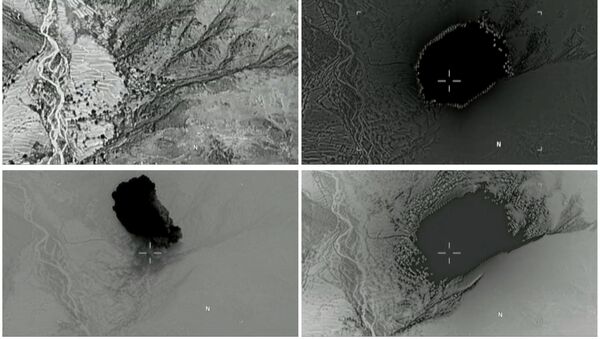Khadim, a former strategic communication director at Independent Directorate of Local Governance in Afghanistan, pointed to the minimal damage the bomb inflicted on Daesh as opposed to the weapon's size.
"This was not a very strategic act," he said. "Such a huge bomb killed 36 people. That's not a very strategic investment."
The United States Central Command announced that the GBU-43/B was used in an operation carried out at 7:32 p.m. local time on April 13. The mission targeted Daesh tunnels in the Achin district of the Nangarhar province. The Pentagon ostensibly chose the MOAB to "minimize the risk" to US and Afghan service personnel engaged in a clearing operation in the area "while maximizing the destruction of [Daesh] fighters and facilities."
US Forces-Afghanistan Commander Gen. John W. further defended the choice of the armament during a press conference held on April 14. "This was the right weapon against the right target," he said.
.@USFOR_A This was the right weapon against the right target. #Achin #Nangarhar — GEN Nicholson CDR
— U.S. Central Command (@CENTCOM) 14 апреля 2017 г.
Khadim suggested that there are three reasons why the United States decided to use the MOAB for the first time in combat.
Saber-rattling "definitely should be one of the reasons behind using this big bomb in Afghanistan," he said. "That would be really a showcase or a projection of power to [those whom Washington views as] competitors."
The analyst did not elaborate on who those are, but many have pointed out that the move was designed to send a message to Russia, China, Iran, Syria and North Korea.
"The third reason is [Gen. John W.] Nicholson today had a press conference. He promised the Afghan people that in 2017 [the US-led coalition] will try to root out [terrorist groups in the country]. He repeated this so many times that 2017 will be the end of Daesh in Afghanistan. I hope that should be a reality because I am not sure that could be a smart talk to overpromise," the analyst observed.
Have you heard the news? Sign up to our Telegram channel and we'll keep you up to speed!


